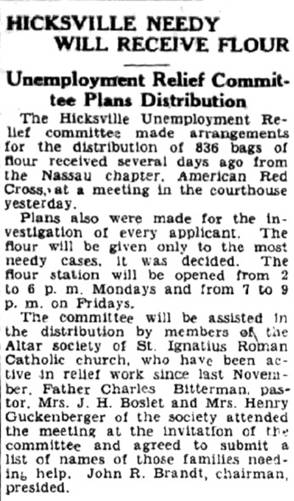The Dismal Texture of the Depression
The Great Depression ate away the flimsy glitz of the 1920s, and left grim despair in its wake. Let's try to imagine how it felt to live amid that despair.
Obviously, unemployment was a problem, and the basic statistics are overwhelming. National unemployment peaked at an incredible 25%, and though it began to drop, it would remain above normal for more than a decade. In 1930, New York City was home to 7,000,000 people, and its unemployed numbered 1,000,000. My very rough and unverifiable calculations based on these figures suggest that 2,500,000 NYC households had no income, or only a diminished income, due to unemployment.
People who had relied on non-employment income (pensions, stock dividends, rental properties, proceeds from owning businesses, etc.) also suffered. At the outset of the Depression, both the dividend income and the asset value of many stocks simply evaporated. Consumers (happily debt-ridden and dependent on constant easy credit throughout the 1920s) all had to curtail their expenditures at once. Because almost everybody stopped buying things, businesses failed, pensions dried up, rent and mortgage payments disappeared. Banks failed - with no money being deposited, they ran out of funds with which to pay the withdrawals that everyone was making from their savings accounts.
Many people were forced to sell whatever hard assets they had. With so few people able to buy what they offered, however, sales of valuable jewels, cars, and real estate returned only "pennies on the dollar." Many lost their homes and were forced to move in with relatives. Others began to live as the homeless always have, squatting in empty buildings, or in makeshift shacks. The 1930s became the decade of the hobo, as men without jobs tried adopting a nomadic lifestyle, riding freight trains in search of work and handouts.

Evidently, it was possible for a man to become a celebrated hobo.
Brooklyn Daily Eagle, October 13, 1932
As might be expected, the nation's suicide rate doubled, spiking sharply to an all-time high. It would not return to normal levels until the end of World War II. Note that the official statistics do not tell the entire story, for they omit failed suicide attempts, or intentional deaths disguised as accidents or misadventure.

Nassau Review Star, July 10, 1934
*
The word "starvation" is rarely used when a qualified doctor records the cause of someone's death. Instead, a specific life-ending medical condition (e.g., heart failure) is recorded as the cause. In fact, those who de facto starve to death die from any number of official causes, including infections and conditions which arise because of severe malnutrition. Thus, it impossible to know accurately from official records how many Americans died of starvation during the Depression.
The picture is also complicated by the likelihood that people who became convinced of their impending starvation may have chosen to end their lives without waiting for the final suffering, and thus are considered as suicides, not victims of starvation. And finally, there also is a probability that, in a severe state of starvation, a person may accidentally fall or otherwise sustain fatal trauma.
Whatever the numbers don't say, people did go hungry in these years, and some of them died for want of food.

New York Daily News, December 8, 1931
By 1932, communities all over the country were responding, working with charities, clerics, and the Federal government to distribute what they could to keep people alive.

Brooklyn Daily Eagle, March 31, 1932

Nassau Daily Review, March 15, 1932

Nassau Daily Review, April 22, 1932
***

